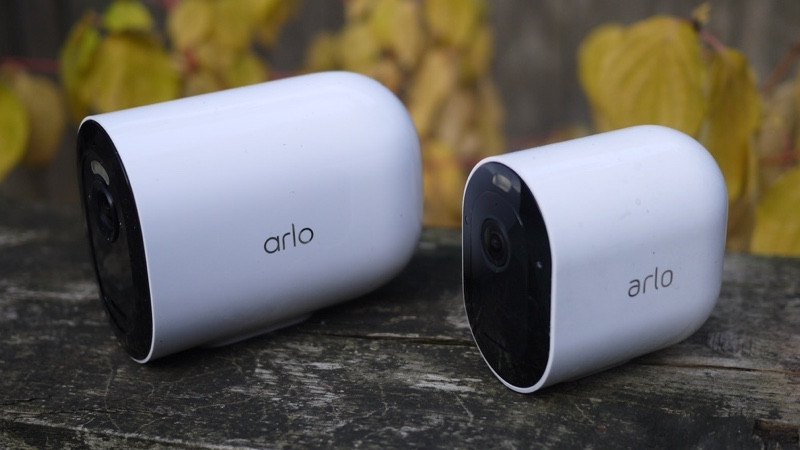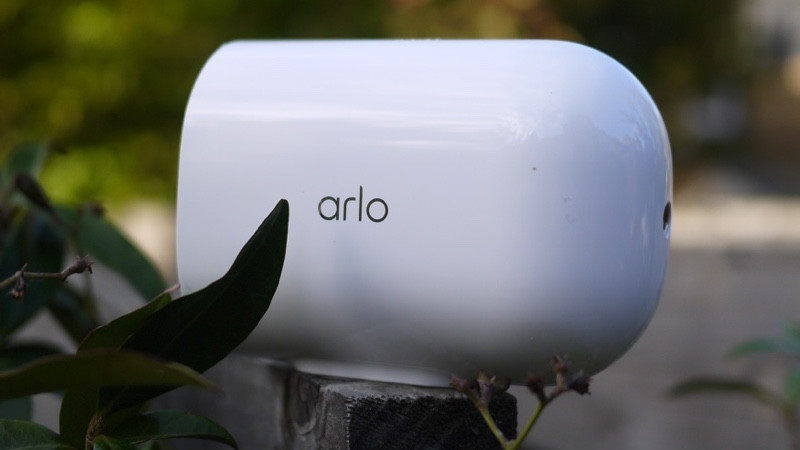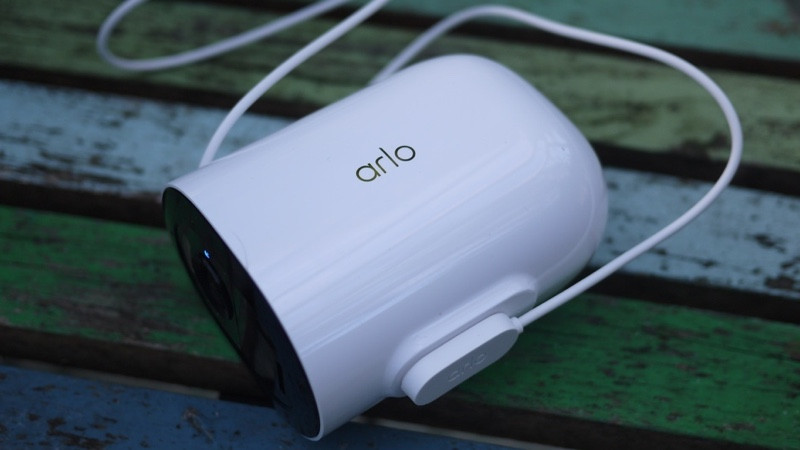Wi-Fi now on board making Arlo's portable camera a better all-rounder
If you need a camera that can work on 4G as well as Wi-Fi, then this is clearly the best option available. With a larger battery, Wi-Fi support and higher-resolution video, this model is a big upgrade from the original. That said, it’s still a very niche device, and it’s much more expensive than the competition. The regular Arlo Pro 4 is a lot cheaper and shoots higher resolution video. For most people, the sensible option is to buy that camera (or a rival) but have their broadband backed up by a router that supports 4G or 5G, such as the Netgear Orbi NBK752.
Pros
- Wi-Fi and 4G
- Excellent software
- SD card backup
Cons
- Canu2019t remotely retrieve SD card footage
- Expensive
- Not 2K
The original Arlo Go was a super-niche security camera that could work practically anywhere thanks to its battery and integrated SIM card slot.
However, it suffered from not having Wi-Fi. The Arlo Go 2 is here to fix that, with both Wi-Fi and 4G, so it can be a part of your regular security camera network when you want it to be, yet keep an eye on things when there’s no wireless network.
New arrival: Arlo Pro 5 review
That means the Go 2 can be incorporated into an existing Arlo set up when it’s not required as a remote camera. However, it doesn’t support connection to an Arlo base station.
At $249.99 / £249.99, it’s expensive for a 1080p camera, and only really of use if you have something to protect outside of Wi-Fi range, such as a camper van, caravan or boat.
If you fit into those categories, it’s a great choice, but if not there are cheaper security cameras.
Read on for our full Arlo Go 2 review.
Arlo Go 2: Design and setup

Arlo Pro 4 and Arlo Go 2 side by side
For this model, Arlo has brought the Go 2’s design in line with the other products in the range.
Here, the curved plastic body is slightly longer than on the regular Arlo Pro 4, as there’s an extended battery inside, the same as used in the new Arlo Pro 4 XL and Arlo Ultra 2 XL.
The idea is that the longer battery will power the camera for longer, even if it’s running on 4G.
Arlo smart security option:Arlo Ultra 2 review
Pull the camera out of its housing, and that’s not the only difference from a regular camera. Inside, you’ll see two additional slots. One’s for a SIM card, and the other is for a microSD card for offline storage.
Neither slots have to be used, as the Go 2 is compatible with Wi-Fi, a marked improvement over the original.
It makes sense first to configure the camera over Wi-Fi, as this makes life a bit easier and means you don’t have to use any mobile data.
Adding the camera to the app over Wi-Fi is the same as with the other Arlo cameras and shouldn’t take more than a few minutes. Once done, the camera can be put into place.
As there’s a larger body and bigger battery, this camera isn’t compatible with the magnetic mounts but has to be used with the provided screw mount.
This provides a more secure method of mounting the camera, but it does mean you have to unscrew the camera every time you want to charge it using the magnetic connector underneath; well, unless you buy a solar panel and keep the battery topped up using this instead.
Arlo Go 2: Features

Once connected to the app, the Arlo Go 2 acts much like any other Arlo camera, although there is one difference.
Here, there’s a choice of Wi-Fi or cellular connections. By default, the camera will connect and run over Wi-Fi, but when your chosen network is out of range, it will switch to its 4G connection instead.
It’s a useful trick in many cases. Park a caravan at home, for example, and the camera will record via Wi-Fi. When you go off on holiday, it will switch to 4G, providing security alerts via the mobile network.
As with the other Arlo cameras, the Go 2 is best used with an Arlo Secure plan. This costs $2.99 / £2.79 a month for a single camera, or $9.99 / £8.99 a month for unlimited cameras.
This package gives 30-days of event history with a maximum recording resolution of 2K (more than good enough considering there’s only a 1080p sensor inside the Arlo Go 2).
As well as cloud backups, Arlo Smart gives cloud activity zones, so the camera can be focused only to alert you when it picks up motion in set zones.
Combined with smart alerts, which let you choose if you want alerts about people, vehicles or animals, the Arlo Go 2 can be finetuned so that it doesn’t spam your phone with alerts.
Some care does need to be taken. If you fit the camera to something mobile, be aware that you may need to adjust its motion zones at each destination.
Likewise, you have to be a bit careful with modes. While modes are a powerful way of controlling where and when the camera can record, the geolocation option, which can turn the camera on when you go out and off (or onto a schedule) when you get home, also needs configuring for each location the camera is in. Get things wrong, and you may find that the Arlo Go 2 either records too much or too little.
Recorded footage is saved into the app’s library section, filterable by date, event and camera. It’s refreshingly simple to find a clip, and just as easy to download clips to your phone. Annoyingly, clips saved to the camera’s SD card can’t be retrieved remotely, and the memory card has to be removed and connected to a computer.
That’s fine if the camera was out of Wi-Fi and mobile range, and you want to get any footage that was recorded. If the camera was stolen, all that backed-up footage will go, too.
IFTTT support for changing modes, SmartThings integration, and Amazon Alexa or Google Home compatibility (for live streaming to a compatible smart display) make this one of the best-connected cameras.
Arlo Go 2: Video quality

With a 130-degree lens, the Arlo Go 2 captures a decent amount of outside space. With a 1080p sensor, the camera’s footage is decent but falls a way behind the Arlo Pro 4 with its 2K sensor.
In daylight, I found that video was well exposed and reasonably sharp. Finding a frame where a person is clearly visible was easy enough, and the video is good enough for security.
At night, the camera can shoot in black and white using its IR LEDs, although it also has a spotlight that lights up the night and lets the camera shoot in full colour.
The footage does become a bit soft and a bit blurred at times and, depending on the ambient light, it can be hard to work out finer details.
Overall, this camera shoots about the best quality 1080p footage that you get, but higher resolution cameras will look better.





